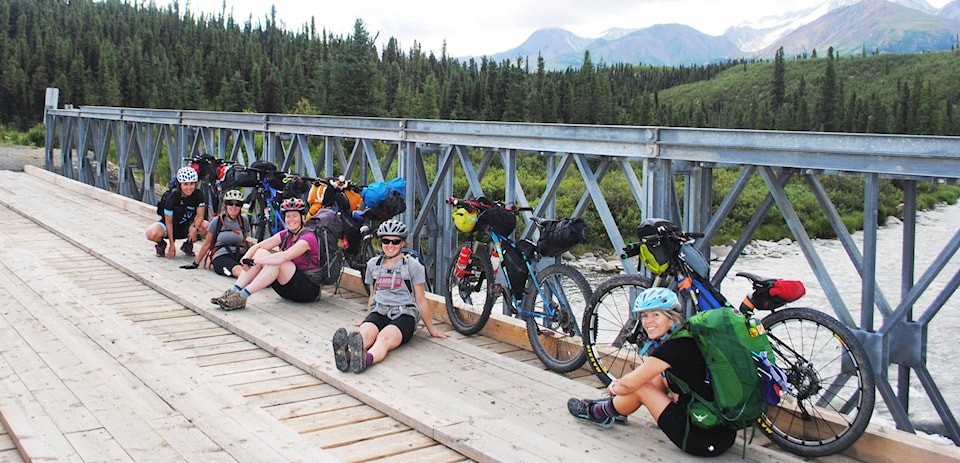In part 4: The team reunited after two days apart, and began their final push for the final destination of Norman Wells. Pushing themselves to their physical and emotional limits, they eventually called for a helicopter to pick them up with 80 kilometres left in their journey after hitting impassible terrain. They were encouraged when reclamation project workers told them they had made it as far as was physically possible. The group was then dropped off at Norman Wells where they waited for their flights home.
The group flew from Norman Wells to Yellowknife together on Aug 1. Their spirits were high as they had been treated to a hot shower, food and beer the night before. More importantly, word of their trip was well received by those who knew the story of the Canol Trail.
Gabriela Stephens, who took a flight back to Pennysylvania, was the first to separate from the group. Caitlin DuBiel and Rohanna Gibson flew together to Terrace, leaving Sinead Earley and Hannah Johnston behind where they conducted further research before returning home.
Over the course of 11 days, the group had pushed themselves through nearly 600 kilometres of some of Canada’s roughest terrain, and even though they had received encouragement from those who knew the landscape, the group still felt that their trip was unsuccessful. The chances of them trying to make it across the trail again are slim, and so there was the feeling that they had let a unique opportunity slip-by.
“That was the bittersweet part of being in that terrain,” she said. “This is the only time I may ever see this. I may never be here again and it is so breathtaking.”
DuBiel — who is strong-willed individual — said it was the first time she’d felt as if she’d been forced to give up on something she’d set her mind to. After further reflection and some time to process the trip, she has made peace with the fact making it within 80 kilometres of Norman Wells was a remarkable feat.
“With more space from it, I think we came to terms with the fact that we accomplished something really unique,” she said. “We saw terrain that only a handful of people have ever seen, especially since the desertion of this pipeline. Not that many people make it up there.”
DuBiel also said she was inpsired by the resolve shown by her teammates, and how they were able to remain positive in what was the most physically demanding thing any of them had ever done. Despite their difficulties, the group remained united throughout the whole trip without any fighting or fractures.
“Nobody really got at each other as tired as we were or as messed up as we felt,” she said. “It was just a harmonious kind of trip with five very different people.”
Ultimately, the trip was about shedding light on a forgotten part of Canadian history, and in the regard, the trip was a success. The group gathered footage and photographs and are putting together a short doc to show what happened and what is still happening along the Canol Trail. After the Americans abandoned the pipeline, they left everything they had set up behind and it still stands there to this day, and remediation teams — like the ones who came to check in on the group at the end of their journey — are cleaning up what remains of it.
DuBiel said she is not overly political, but learning about the history of the trail and seeing the remains of the project make her think about the effects of large-scale infrastructure projects being proposed today.
“It helps me want to stop and really encourage people to think about all the possible repercussions, and whether all the resources going into the project are properly matched with the expectations coming out of it,” she said. “Surely we have something to learn from this project.”
